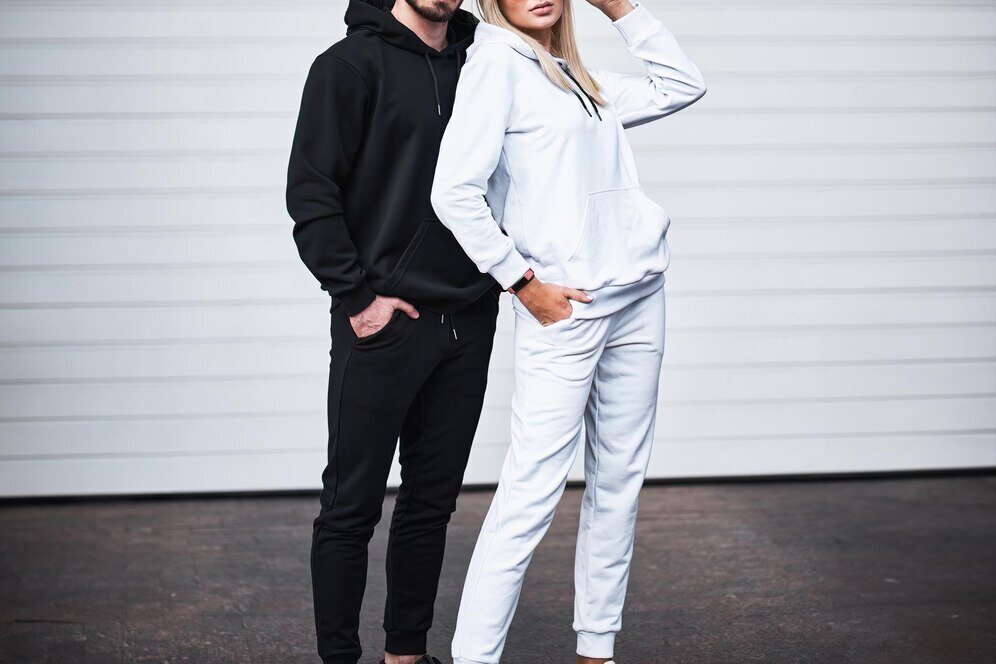Sustainable Fashion Trends That Make Sense in an Inflated Economy
Apr 29th 2025

When your grocery bills read like a luxury goods receipt, convincing yourself to buy a $300 pure cotton hoodie for sustainability's sake sounds like a rich people’s problem.
However, when done right, sustainable fashion isn’t just about saving the planet; it’s about not burning a hole in your wallet six months down the line.
We're not talking about greenwashing or paying $$$ for a “climate-positive” hoodie. We’re going to discuss smart, inflation-proof wardrobe choices that outlast trends and quietly save you money.
1. Timeless is Better Than Trendy
When inflation hits, the idea of buying a good quality crop jacket that’ll be passé by next summer feels absurd. To be economically savvy, opt for timeless pieces.
Neutral colors, clean silhouettes, and quality cuts mean you’re not just buying a “look,” you’re buying utility. Whether you're dressing up for work, the weekend, or a Zoom meeting from home, versatile clothing eliminates the need for multiple wardrobes and thus reduces the need for frequent spending sprees.
You might have already noticed that athleisure brands that deal in heavyweight, all-cotton pieces with better tailoring details, such as flatlock seams, reinforced bartacks, and gussets, are seeing a rise in loyal customers.
Also, celebrities worldwide are actively endorsing athleisure brands and opting for high-quality activewear pieces over fancy dresses as their go-to outfit for everyday outings.
2. Durability Is the New Luxury
There’s something your $15 polyester blend classic sweatpants won’t tell you in advance: it’ll pill, stink, stretch out, and give up on you in one season.
It’s easy to scoff at expensive organic cotton sweatsuits until you realize it's still intact after three winters, five travel holidays, and countless laundry cycles.
In this inflation-stricken but woke age, luxury isn’t a logo splashed across your chest but the quiet confidence of something that holds up year after year.
Durability has become the real flex. The smartest wardrobes now lean on 100% cotton staples instead of seasonal gimmicks that you’ll be either bored with or embarrassed by next season.
Investing in well-built pieces of fabric that are convenient to layer up and down is the strategy to reduce the overall cost of clothes. So, yes, durability might not turn heads on Instagram, but it will definitely save you some money for dine-outs in the future.
3. The Real Cost of Cheap
A couple of bucks for a fast fashion cotton sweatshirt with straight stitch and heat-pressed hems is definitely cheap, but also short-sighted.
You're paying in repeat purchases, landfill guilt, and skin reactions (yep, synthetic fibers + sweat = breakouts, rashes, sometimes worse).
Now, compare that to an outfit with:
Bartack reinforcements at high-stress points (pockets, underarms, etc.)
Flatlock seams that prevent chafing and unraveling
Double-needle stitching for structure
100% natural fibers that breathe, age well, and biodegrade
These details are usually skipped in fast fashion because you’re not supposed to notice. You’re just supposed to re-buy. That’s not inflation-smart, that’s fashion debt.
4. Workwear Crossovers
Sustainable fashion is no longer limited to “forest-core” aesthetics. It’s clean-cut cotton pullovers that pass off as business casual when paired with the right jacket. It’s joggers with gusseted crotches that move better and don’t wear out with everyday strain.
Brands focusing on cross-functional athleisure that works for all: home, work, travel, errands—are nailing it. Because when one item replaces three, you spend once and dress often.
5. The Long Game Wins
Honestly, most people don't buy sustainable clothes solely for the environment. They do it because they’re tired of replacing socks every three weeks, or hoodies that feel like plastic wrap or because they want 100% cotton sweatpants that actually last.
The new pitch is not “go green,” but “save green.”
Instead of shouting about carbon footprints and compostable dyes, more brands are quietly proving value: quality, comfort, and cost-per-wear that gets better over time. It’s a long game, and this is how we survive inflation.
Long and short, sustainable fashion is no longer about climate ethics—it’s about making smarter bets with your paycheck as well. Look for details that don’t fray, fabrics that don’t fade, and cuts that don’t age out.
Because in this economy, “disposable” fashion is exactly what you can’t afford.
